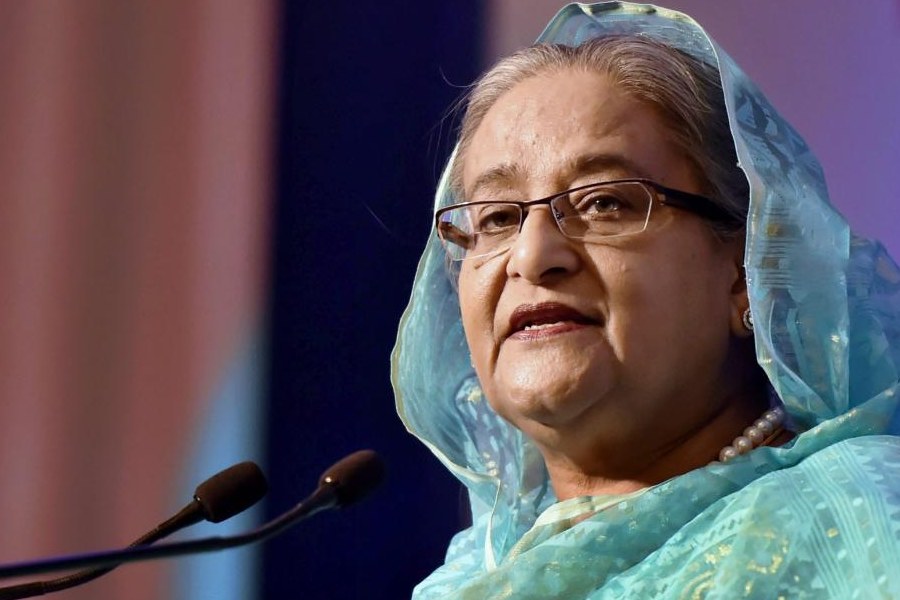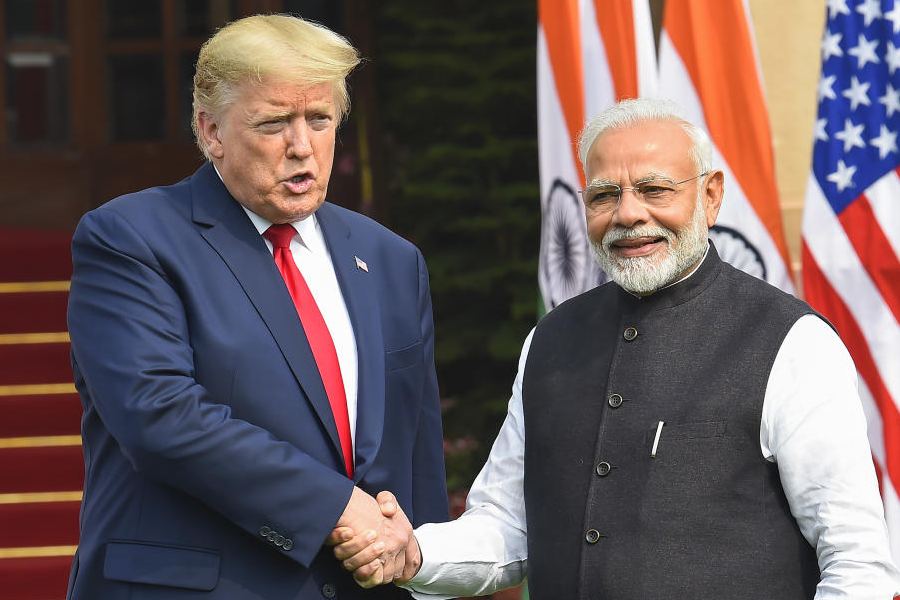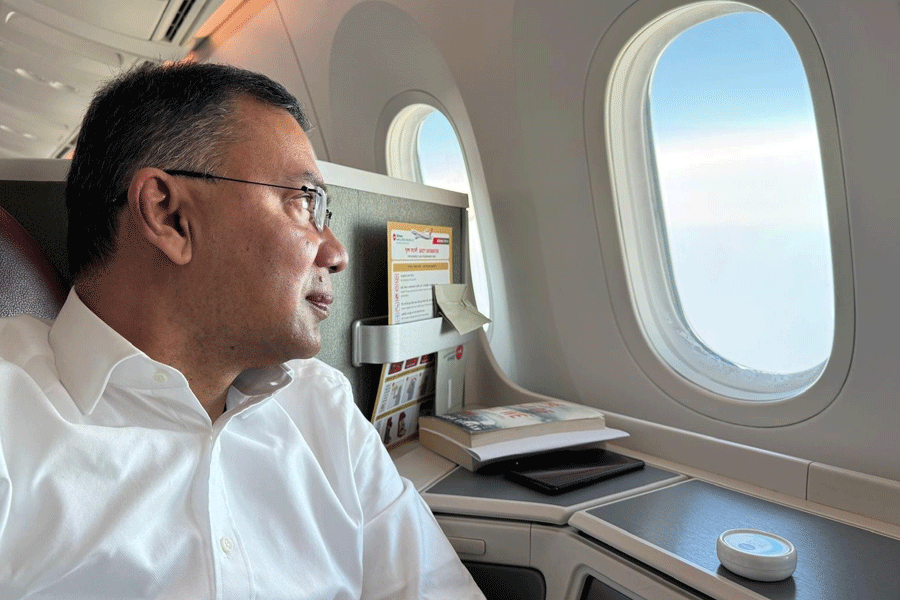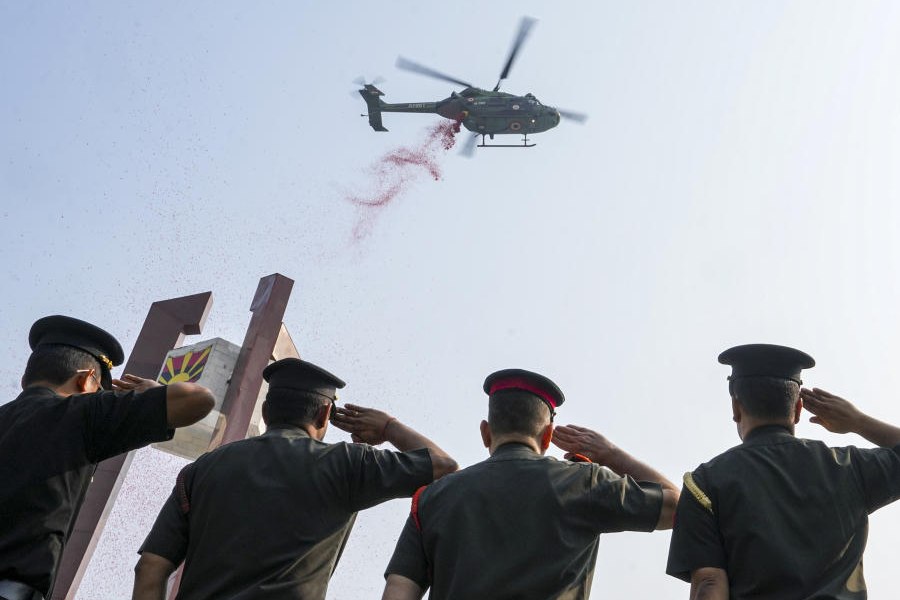 |
It’s time for a shakha session, and the pracharaks — or preachers — are all ready for it. But instead of congregating in the local park, where the young and the old gather in their khaki shorts for a drill and discussions, the men are sitting in front of their laptops. They log on — and the Rashtriya Swayamsevak Sangh (RSS) gets ready for another meeting on its cyber shakha.
The old order is changing. The RSS, long accused of existing in a time warp, is seeking to function in real time. A debate has engulfed the group. Should members be allowed to junk their khaki shorts and white bush shirts for track suits? Do they have to trundle along in slow trains, or are they allowed to fly? In short, can the RSS move with the times? The questions are crucial — for the issue at hand is change. The savants are thinking hard in their fortified campuses in Nagpur and Delhi. On the agenda is almost everything. Issues such as members being allowed to play cricket and football in the shakhas and whether they have to shun sex if they want to go up the RSS ladder are being discussed. How should they save the cow and the Ganga and — most importantly — salvage the battered Bharatiya Janata Party (BJP), the RSS’s political progeny?
Many in the RSS believe that one way of saving the BJP — which was swept out of power at the Centre in 2004 and is racked by dissidence — is by strengthening the RSS itself. For that, the RSS, whose shakhas have been declining in recent years in numbers, has to attract more people. And to be able to do that, it needs to answer some questions that its members have been asking.
“The RSS is going through a churning, organisationally, on its relations with its affiliate organisations and flexibility in its ideology,” says a leader who sat on a privileged perch in the Sangh and the BJP and claims he can take a “distant” view of both. The churning, he says, has been triggered among other reasons by the RSS’s diminishing inability to attract young people and the “declining” quality of the pracharak.
The RSS banks on the character of its member, and any dilution, says K.N. Govindacharya, a former pracharak and a former BJP ideologue, can spell disaster for the organisation. “He is the steel frame of the organisation, and he should be of 24 carat, not more or less. He should be like an aircraft and not the pilot, always on radar and properly tanked up to land safely. So, if a hundred potential pracharaks are contacted, the chances are 30 will come to the shakhas and of them, only 10 will become regulars,” he says.
Not surprisingly, the number of shakhas has decreased in the last few years. In 2006-07 (March), the RSS had 44,417 shakhas in 30,981 places. In 2008-09 (January), it had 43,905 shakhas in 30,015 places. On the other hand, till January 2004, when a BJP-led government was at the Centre, the RSS had 48,329 shakhas in 33,758 sites. Govindacharya attributes the relatively high attrition rate to full-time jobs, domestic responsibility, tuition classes, TV and the Internet. Clearly, for the young, the early morning exercises at the neighbourhood RSS shakha are just not attractive enough.
The future of shakhas came up at the central working committee meeting of the RSS at Rajgir in Bihar last week. RSS head Mohan Bhagwat, who is specifically targetting the youth, has been mulling over changes to get around these problems. “We introduced new dimensions to our working system in the last several years,” says pracharak pramukh Madan Das Devi. “We have designated pracharaks to restructure our activity among the college-going youths, professionals, etc.”
Bhagwat, 58, educated in veterinary sciences, is “eminently suited” to “re-orient” the organisation because he’s “modern-minded and vibes well with scientists from the US National Aeronautics and Space Administration and students from the Indian Institutes of Technology and the Indian Institutes of Management,” says BJP spokesman Prakash Javdekar, who counts himself as his disciple. Walter Andersen, co-author of The Brotherhood in Saffron and a professor of South Asian studies in the Johns Hopkins University, stresses that Bhagwat has been seeking to attract the young. “The young in India are now better educated, more ambitious and I think Bhagwat senses this,” he says.
Information technology milans (get-togethers) are a part of Bhagwat’s innovations that are flourishing in Bangalore. Young techies, up to their eyebrows with work and money, are being encouraged to move towards the RSS. The meetings are marked with bouts of soul-searching on “cultural nationalism”, the RSS core belief. The milans have been taking place since 2007 on festive occasions such as Vijaya Dashami, Holi or Diwali, when the chief RSS leader delivers his annual lecture. The meetings end with the members singing the Sangh anthem — Namaste, sadaa vatsale mathrubhoomi (salutations, ever-loving Motherland) with their right hand placed over the chest.
The IT pull was propelled by former IITians and engineers working full-time with the Sangh, who demolished the conservatives’ resistance to the computer by uncovering its potential. “An alternative to the shakha has been devised. We call it a cyber shakha. Instead of congregating in a public place, members sit in their rooms and chat on the net on a mutually chosen date and time,” a source says.
Milind Oak, who looks after the RSS’s archives and the website, claims the ‘e-shakhas’ have wowed its diaspora in the West. “Persons living apart by 300 kms or more, but wedded to a common cause and ideology, stay connected. There is no way of verifying the antecedents of the netizens. But we take the minimum caution of checking the e-mail IDs and ensuring they don’t spam,” says the former computer engineer.
The RSS has relaxed the shakha rules and drill to facilitate other professionals such as doctors and lawyers to participate after duty hours. “After 8 pm, obviously nobody can play kabaddi or do strenuous exercises (which are the norm in the morning shakhas). So we’ve introduced what we call intellectual yoga. Meditate and discuss the important issues of the day,” says Ram Madhav, a member of the central working committee of the RSS.
The 84-year-old uniform or gana vesh may also give in to blue trousers and a white shirt. Insiders say there has been a demand — ironically from married or older members — who either complained that their children were too “embarrassed” to see them in outsized khakis or their legs freeze in winter. BJP lore has it that its senior leaders stay away from the shakhas because their shorts don’t fit them anymore or their children have hidden them away.
However, the question of lifting the embargo on marriage remains unresolved.
In 2005, the Sangh floated a trial balloon on its web-site, www.rss.org, in the form of a poll on whether pracharaks should marry. About 57 per cent said ‘yes,’ 32 per cent said ‘no’ while the rest were undecided. The link was later taken off.
In 2004, a pro-RSS journal, Hinduism Today, carried a news report that the Sangh was relooking the celibacy rule because bachelorhood apparently made the 50+ swayamsevaks cynical and reclusive. But a proposal to relax the norm for those in the second and third rungs of the hierarchy has been shot down. “Family life distracts people and encourages corruption,” a pracharak states baldly.
The Sangh evidently seems open to cosmetic tweaks — such as “tolerating” younger pracharaks who wear Fabindia kurtas, zip around in chauffeur-driven cars, fly instead of taking a train and meet their acquaintances in coffee shops and clubs. However, it is unprepared to “compromise” on its basics and militates against “change” in an intrinsic sense. “Flexibility in articulation, yes, but the core ideological belief will remain unchanged,” emphasises Seshadri Chari, a former editor of the Organiser, the RSS mouthpiece.
So, on the sticky area of majority-minority relations, its view essentially remains frozen in time, despite it venturing to take a few steps forward. So while Bhagwat tasks Indresh (he goes by his first name), a pranth pracharak, to “disabuse” the Muslims and Christians of the RSS’s low tolerance of non-Hindus, Indresh himself has strong views on the subject. “Let Christians go to the Vatican and Muslims to Mecca and Medina. But when in India, they must be ready to offer their heads to the nation when called to,” he says.
That within the RSS little has changed was evident when a cow protection campaign was flagged off by the RSS in Kurukshetra in August. While the Sangh speakers tried hard to project the issue in economic idiom and invoked M.K. Gandhi and Aurobindo, in the presence of Muslim representatives roped in by Indresh, Ashok Singhal of the Vishwa Hindu Parishad urged the crowd to chop off the hands of the kasais (but-chers) if they killed cows.
However, Andersen feels the RSS should be given the benefit of doubt. “There is a lingering suspicion that Muslims and Christians to a less degree have links outside the country. To a large extent, this is a residue of the colonial experience, missionary activity and then the Partition. But I see less of it mentioned in RSS publications that I have read recently.”
So is the world going to see a new improved RSS in the years to come? “Like most entities, the RSS’s slow to change,” says an insider. For the time-being, the shakha in the RSS is losing its central role. The real tests, however, are yet to come.
Illustration: Suman Choudhury










